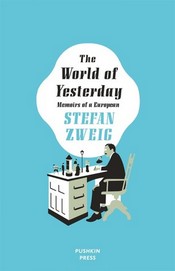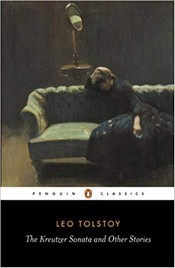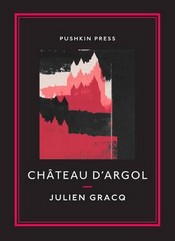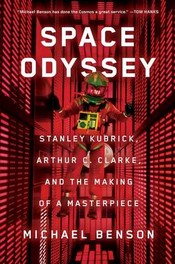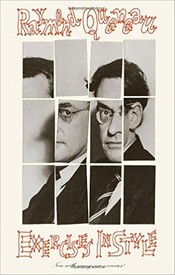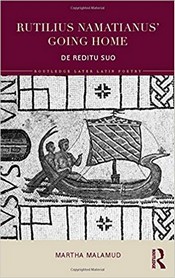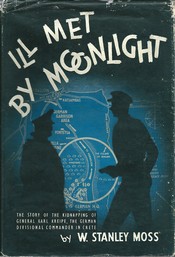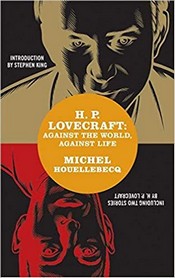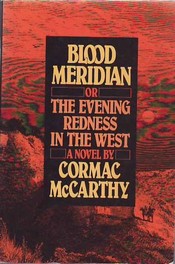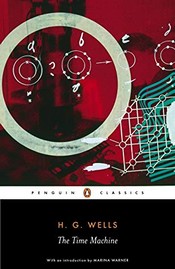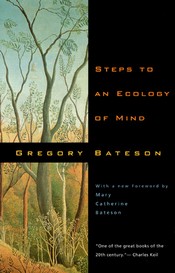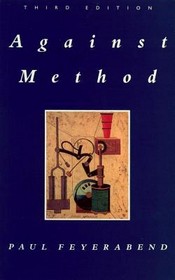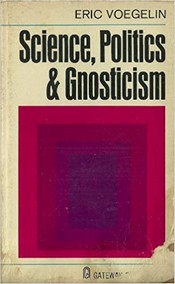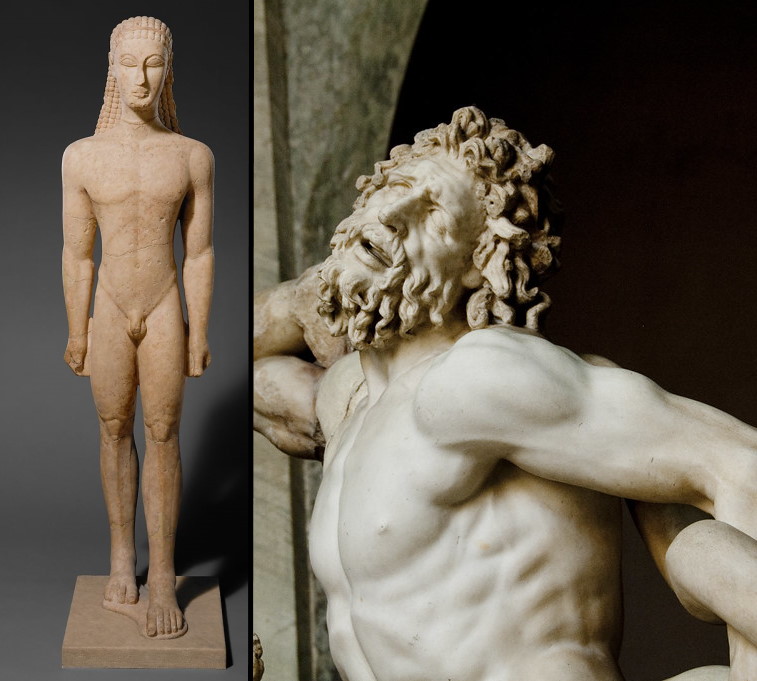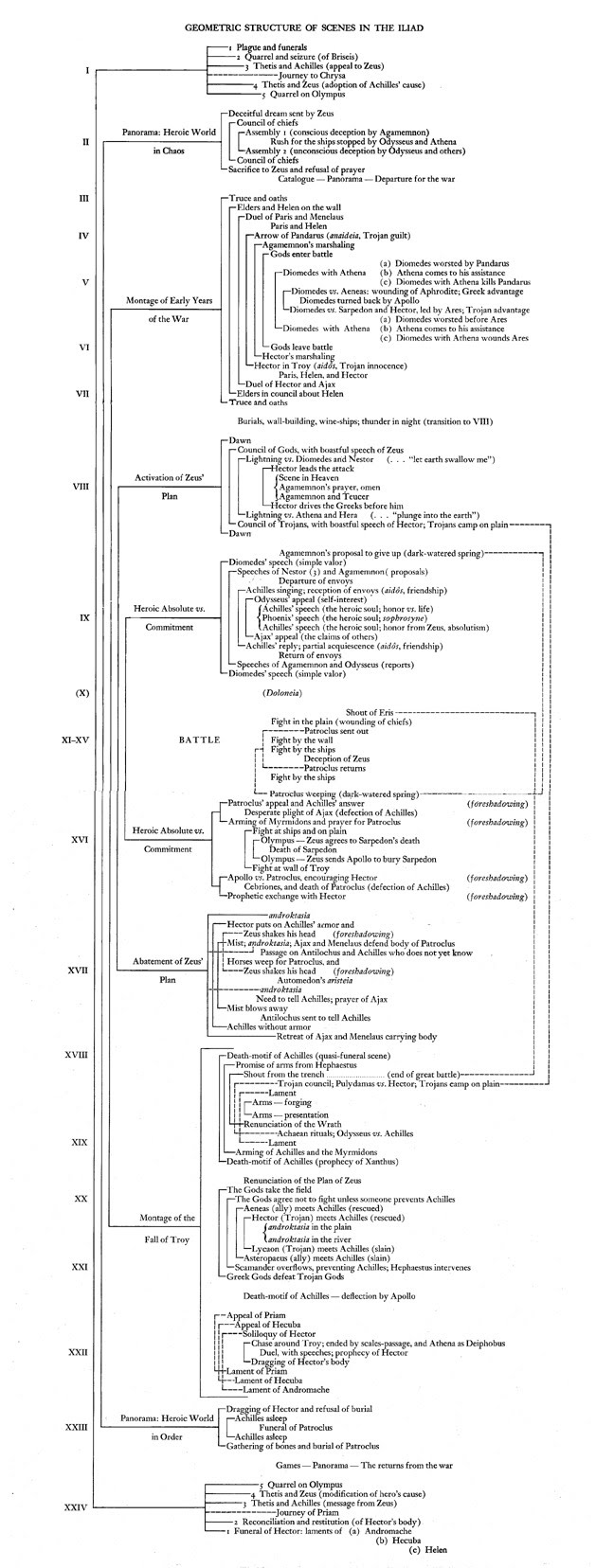Reading Notes: Civilization & Capitalism, 15th-18th Century, Vol. I: The Structures of Everyday Life
I first discovered Fernand Braudel when Tyler Cowen answered the question: "whose entire body of work is worth reading?", placing him next to people like Nietzsche and Hume. It was good advice.
Braudel starts working on his doctoral dissertation in 1923, at age 21, intending to concentrate on the policies of Philip II of Spain in the form of a conventional history. To support himself, he teaches at an Algerian high school for a decade, then at the university of Sao Paulo until 1937. During this period he keeps up with developments in France, especially Marc Bloch and Lucien Febvre's Annales School, which focuses on long-term history and statistical data.
In 1934, 11 years after he began, Braudel starts to find quantitative data. Population figures, ship cargoes, prices, arrivals and departures. These will form the basis of his novel, data-driven approach. Five years later, in 1939, he finally has an outline ready.
Then the Nazis capture him. He spends the next 5 years in a POW camp where he writes the first draft of La Méditerranée without access to any materials, mailing notebooks back to Paris. When the war ends, he becomes the de facto leader of the second generation of the Annales School. An additional four years after that, 26 years after he started working on it, The Mediterranean and the Mediterranean World in the Age of Philip II is published.
The general argument of this work is that history moves at different speeds, and one must distinguish them: the short term (daily events as perceived by contemporaries), the medium term ('economic systems, states, societies, civilisations'), and la longue durée – a perspective of centuries or millennia without which the shorter timeframes cannot be understood.
In the preface, Braudel declares: "I have always believed that history cannot be really understood unless it is extended to cover the entire human past." Civilization and Capitalism is built on similar principles.
The initial seeds for C&C were planted in 1950, when Febvre asked Braudel to contribute to a volume for a series on world history. Braudel would simply provide a summary of existing work on the development of capitalism. But Febvre died before the volume could be completed, and Braudel took responsibility for what turned out to be a three-volume series on capitalism. The first volume came out 17 years after work began, in 1967. The final volume would not be published until 1979.
Reading Braudel one gets the impression of an infinite curiosity at work for decades, mining every source for the tiniest piece of data, and then magisterially combining everything together. Despite fairly brutal editing these notes are still way too long, and yet they struggle to capture even a tiny part of the detail and depth that the book contains.
Vol. I: The Structures of Everyday Life
A good starting point might be what is left out: politics, wars, dynasties, religion, ideology, peoples. The index of maps & graphs gives the reader a taste of what is to come: "Budget of a mason's family in Berlin about 1800"; "Bread weights and grain prices in Venice at the end of the sixteenth century"; "French Merchants registered as living in Antwerp, 1450-1585".
The first volume aims to illuminate every aspect of material life: agriculture, food, dress, housing, towns, cities, energy, metals, machines, animals, transportation, money. Braudel's goal is not simply to examine each of these in isolation, but to show how all the elements of material life interact to form cultures, economies, systems of governance, power structures, long-term cycles or trends. He comes remarkably close to achieving this absurdly ambitious task. For people into worldbuilding this tome is pure gold. The first volume also has the greatest general appeal: unlike the other two which are somewhat esoteric, I think this is a book everyone will love.
In short, at the very deepest levels of material life, there is at work a complex order, to which the assumptions, tendencies and unconscious pressures of economies, societies and civilizations all contribute.
It is here that Braudel shows off his greatest skill, which is the combination of the microscopic with the panoramic. At the top level: Geography. Climate. Land. Crops. ZOOM IN. Trading routes. Piracy. Economy. Cities. Technology. And then zoom into details like the price of wheat relative to oats in 1351 Paris. He shifts effortlessly between the global, long-term perspective and minute, specific data and anecdotes, combining the two to form a coherent understanding.
The Weight of Numbers
Everything, both in the short and long term, and at the level of local events as well as on the grand scale of world affairs, is bound up with the numbers and fluctuations of the mass of people.
The predominant feature of the ancien régime is malthusianism. From the 16th century on, Europe was constantly on the brink of overpopulation. Epidemics and famines established balance, and occasional recessions in population created great wealth for the survivors. "Thus in Languedoc between 1350 and 1450, the peasant and his patriarchal family were masters of an abandoned countryside. Trees and wild animals overran fields that once had flourished." France had 26 general famines just in the 11th century; 16 in the 18th.
Famine recurred so insistently for centuries on end that it became incorporated into man's biological regime and built into his daily life. Dearth and penury were continual, and familiar even in Europe, despite its privileged position. [...] Things were far worse in Asia, China and India. Famines there seemed like the end of the world. In China everything depended on rice from the southern provinces; in India, on providential rice from Bengal, and on wheat and millet from the northern provinces, but vast distances had to be crossed and this contribution only covered a fraction of the requirements.
Slowly, expansion and improvements in agricultural productivity doubled the global population, which Braudel calls "indubitably the basic fact in world history from the fifteenth to the eighteenth century".
Almost all of these people lived in the countryside. "The towns the historian discovers in his journeys back into pre-nineteenth-century times are small; and the armies miniature." The towns were also great population sinks, drawing in men from the countryside and killing them. Wild animals were everywhere, often a real threat. Even in Europe, which was full of wolves and bears.
A lapse in vigilance, an economic setback, a rough winter, and they multiplied. In 1420, packs entered Paris through a breach in the ramparts or unguarded gates. They were there again in September 1438, attacking people this time outside the town, between Montmartre and the Saint-Antoine gate. In 1640, wolves entered Besançon by crossing the Doubs near the mills of the town and 'ate children along the roads'.
Braudel writes about the global ebb and flow of epidemics over the course of centuries, and how they were aided by global trade. And to illustrate their effect, he brings up statistics like the annual number of plague victims in the town of Strauling between 1623 and 1635 (702 people). He tells us of Montaigne, who as mayor of Bordeaux fled the town (like all rich people would) and abandoned his post during the 1585 plague. He quotes the diaries of Samuel Pepys ("the plague making us cruel, as doggs, one to another"). He quotes Francois Dragonet of Fogasses, a rich Avignon citizen of Italian origin, whose leases provided for a time when he would be obliged to leave the town (which he did in 1588, during a fresh plague) and lodge with his farmers: 'In case of contagion (God forbid), they will give me a room at the house... and I will be able to put my horses in the stable on my way there and back, and they will give me a bed for myself.' The dead pile up in the streets (Defoe: "for the most part on to a cart like common dung"), the palaces of the rich are looted.
Montaigne tells how he wandered in search of a roof when the epidemic reached his estate, 'serving six months miserably as a guide' to his 'distracted family, frightening their friends and themselves and causing horror wherever they tried to settle'.
Daily bread
Wheat
Diets in this period were almost universally vegetable-based, especially outside Europe, for the simple reason that land devoted to cultivation is much more efficient. Braudel focuses on three major crops: wheat, rice, and maize. These crops sit at the basis of everything: they determine population size, and their required inputs determine labor relations, animal usage (which in turn need their own crops), and so on.
Thus there became established in Europe, with certain regional variations, 'a complicated system of relationships and habits', based on wheat and other grains, which was 'so firmly cemented together that no fissure was possible' according to Ferdinand Lot. Plants, animals and people each had their place in it. In fact the whole system was inconceivable without the peasants, the harnessed teams of animals, and the seasonal labourers at harvest and threshing time, since reaping and threshing was all done by hand. The fertile lowlands called on labour from poor land, inevitably wild highland regions. Innumerable examples (the southern Jura and Dombes, the Massif Central and Languedoc) demonstrate that the partnership was a basic rule of life, repeated on many occasions. An immense crowd of harvesters arrived every summer in the Tuscan Maremma, where fever was so prevalent, in search of high wages (up to five paoli a day in 1796). Malaria regularly claimed innumerable victims there.
Wheat's unpardonable fault was its low yield: it did not provide for its people adequately. All recent studies establish the fact with an overwhelming abundance of detail and figures. Wherever one looks, from the fifteenth to the eighteenth century, the results were disappointing. For every grain sown, the harvest was usually no more than five and sometimes less.
Until very late, agricultural production was fertilizer-limited. In southern Europe half the field would lie fallow every year, and this only really changed after the industrial revolution. Trade happened on local exchanges, which combined with laws against "hoarding" made local shortages problematic. In the 16thC total maritime trade was perhaps 1% of total consumption. White bread was a luxury until the latter half of the 18thC. Flour doesn't keep well, so every town had a mill that worked daily (about 1 mill per 400 people); any interruption (eg because of the river freezing) immediately created supply problems.
Rice and maize
Rice is an even more tyrannical and enslaving crop than wheat.
The key difference between rice and wheat is that the former can produce ~7.3 million kcals per hectare, whereas wheat can only reach 1.5 million. Unlike wheat, there was no need for fallow land, and by the 13thC in China a system of double (or sometimes triple) crop was established. "And thus the great demographic expansion of southern China began."
The high population density created by rice, combined with the necessity for elaborate top-down irrigation systems, resulted in strong state authority that constantly pursued large-scale works.
The problem then is that on one hand we have a series of striking achievements, on the other, human misery. As usual we must ask: who is to blame? Man of course. But maize as well.
While wheat yielded maybe 5 grains for every one planted, maize would yield 150 or more. It grows easily and requires little effort on the part of the farmer (perhaps 50 days per year). "The maize-growing societies on the irrigated terraces of the Andes or on the lakesides of the Mexican plateaux resulted in theocratic totalitarian systems and all the leisure of the peasants was used for gigantic public works of the Egyptian type."
After the discovery of the New World, potatoes and maize flowed back toward Eurasia, but very slowly. It took until the 18thC for maize to see widespread cultivation in Europe. The potato was strongly resisted everywhere, as people thought it caused leprosy or flatulence; it only spread rapidly in the face of famine or war.
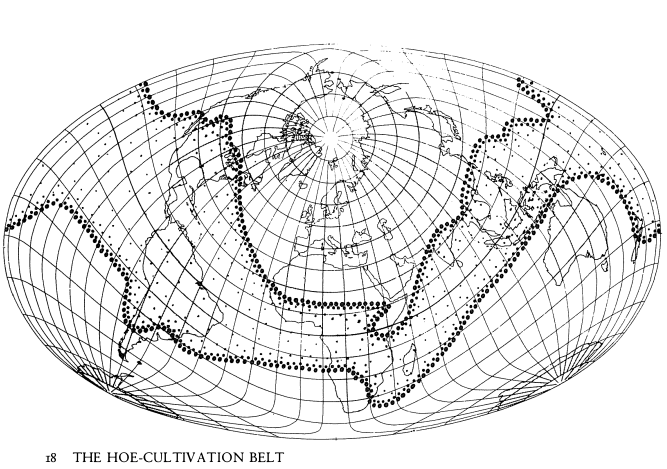 Hoe cultivation belt
Hoe cultivation belt
There is also an enormous region that spans the globe where work was done with a digging stick or hoe, and animals are generally not used. These societies are surprisingly homogeneous:
The world of men with hoes was characterized - and this is the most striking fact about it - by a fairly marked homogeneity of goods, plants, animals, tools and customs. We can say that the house of the peasant with a hoe, wherever it may be, is almost invariably rectangular and has only one storey. He is able to make coarse pottery, uses a rudimentary hand loom for weaving, prepares and consumes fermented drinks (but not alcohol), and raises small domestic animals - goats, sheep, pigs, dogs, chickens and sometimes bees (but not cattle). He lives off the vegetable world round about him: bananas, bread-fruit trees, oil palms, calabashes, taros and yams.
Superfluity and Sufficiency: Food and Drink
Eating Habits
Prices and therefore diets followed population numbers. Large-scale death from war or plague made meat accessible; overpopulation meant the peasants didn't even eat the wheat they produced.
Things had begun to change in the West by the middle of the sixteenth century. Heinrich Muller wrote in 1550 that in Swabia 'in the past they ate differently at the peasant's house. Then, there was meat and food in profusion every day; tables at village fairs and feasts sank under their load. Today, everything has truly changed. Indeed, for some years now, what a calamitous time, what high prices! And the food of the most comfortably-off peasants is almost worse than that of day-labourers and valets in the old days.
The peasant often sold more than his 'surpluses', and above all, he never ate his best produce: he ate millet and maize and sold his wheat; he ate salt pork once a week and took his poultry, eggs, kids, calves and lambs to market.
Spoons and knives were old customs, but the fork dates to the 16thC and spread from Venice.
Anne of Austria ate her meat with her fingers all her life. And so did the Court of Vienna until at least 1651. Who used a fork at the Court of Louis XIV? The Duke of Montausier, whom Saint-Simon describes as being 'of formidable cleanliness'. Not the king, whose skill at eating chicken stew with his fingers without spilling it is praised by the same Saint-Simon! When the Duke of Burgundy and his brothers were admitted to sup with the king and took up the forks they had been taught to use, the king forbade them to use them. This anecdote is told by the Princess Palatine, with great satisfaction: she has 'always used her knife and fingers to eat with'.
The Baron de Tott has left a humorous description of a reception in the country house near Istanbul of 'Madame the wife of the First Dragoman', in 1760. This class of rich Greeks in the service of the Grand Turk adopted local customs, but liked to make some difference felt. 'A circular table, with chairs all round it, spoons, forks nothing was missing except the habit of using them. But they did not wish to omit any of our manners which were just becoming as fashionable among the Greeks as English manners are among ourselves, and I saw one woman throughout the dinner taking olives with her fingers and then impaling them on her fork in order to eat them in the French manner'.
In the West, eggs were accessible to most people, as were cheese and milk. Butter remained limited to Northern Europe. Fish were generally an important source of nourishment, but with large regional variation. The Atlantic coast was particularly advanced in its exploitation of the ocean.
Fish was all the more important here as religious rulings multiplied the number of fast days: 166 days, including Lent, observed extremely strictly until the reign of Louis XIV. Meat, eggs and poultry could not be sold during those forty days except to invalids and with a double certificate from doctor and priest. To facilitate control, the 'Lent butcher' was the only person authorized to sell prohibited foods at that time in Paris, and only inside the area of the Hotel Dieu.
Sugar was brought from the East, with a lot of regional variation in consumption. "In 1800 England consumed 150,000 tons of sugar annually, almost fifteen times more than in 1700." But in other parts of Europe it was virtually unknown. Cultivation of sugar was a labor- and capital-intensive enterprise, and often in sugar colonies there was no space left for any other crops: food had to be imported.
Drinks, stimulants and drugs
Water was generally hard to find. Couldn't be stored on ships, and many cities (like Venice) lacked a real supply and instead relied on filtered rain water and water brought from the mainland. Few aqueducts remained in use, though some were restored in the 15thC (Rome, Paris). Some places used hydraulic wheels to pump water from rivers. The late 18thC saw steam pumps in London and Paris, replacing water-carrying laborers. Snow water was reserved for the wealthy; there was a trade in it, with ships filled with snow moving around the Mediterranean.
Everyone drank wine, and alcoholism was increasingly a problem. The production was generally in the south of Europe, and trade brought it to the north. But it was all new wine, as it did not keep well: regular use of corks would take until the 17thC. The non-wine growing regions had beer, which the south "vigorously opposed". In some areas consumption reached 3 liters per day. "Beer of superior quality was being exported as far as the East Indies from Brunswick and Bremen by the end of the seventeenth century." Cider only started making headway in the 16thC, among the poor. Other civilizations fermented maple juice, agave, or maize.
The great innovation, the revolution in Europe was the appearance of brandy and spirits made from grain - in a word: alcohol. The sixteenth century created it; the seventeenth consolidated it; the eighteenth popularized it.
Stills existed in the West before the 12thC, but things took a while to get going. And the stills would remain primitive until 1773. The drinks started out as medicine. Various guilds fought hard for the privilege of producing Brandy in France. Further north where they had no vines for brandy, grain spirits were most popular. "By the early eighteenth century, the whole of London society, from top to bottom, was determinedly getting drunk on gin."
At nearly the same time as the discovery of alcohol, Europe, at the centre of the innovations of the world, discovered three new drinks, stimulants and tonics: coffee, tea and chocolate. All three came from abroad: coffee was Arab (originally Ethiopian); tea, Chinese; chocolate, Mexican.
Samuel Pepys drank his first cup of tea on September 25, 1660. A century later the English were consuming it by the boatload.
Superfluity and Sufficiency: Houses, Cloths and Fashion
Houses and interiors
The basic constraint on housing was local materials, and as such houses only changed very slowly. Stone mostly for the upper classes; wood (which was gradually replaced by brick) and thatched roof for most people. Earthen dwellings in places where neither stone nor wood existed. In rural areas homes were extremely simple.
Villages were often mobile, "they grew up, expanded, contracted, and also shifted their sites. Sometimes these 'desertions' were total and final - the Wustungen mentioned by German historians and geographers. More often the centre of gravity within a given cultivated area shifted, and everything - furniture, people, animals, stones - was moved out of the abandoned village to a site a few kilometres away."
On 3 February 1695 the Princess Palatine wrote: 'At the king's table the wine and water froze in the glasses.' [...] When the severity of the weather increased, as in Paris in 1709, 'the people died of cold like flies'.(2 March). In the absence of heating since January (again according to the Princess Palatine) 'all entertainments have ceased as well as law suits'.
There were no fireplaces set in the wall before the 12thC. They spread fast, but the design was deficient and they were not very useful for warming homes. It took until the early 18thC for new chimney designs to come along: by utilizing the draught they vastly improve the fireplace's ability to warm the home.
People had almost no furnishings or other possessions. "Official reports for Burgundy between the sixteenth and the eighteenth centuries are full of 'references to people [sleeping] on straw... with no bed or furniture' who were only separated 'from the pigs by a screen'." Outside Europe even chairs were a rarity. In general there was very limited production of such items, and renovations were a large expense even for the rich.
Costume and fashion
Subject to incessant change, costume everywhere is a persistent reminder of social position. The sumptuary laws were therefore an expression of the wisdom of governments but even more of the resentment of the upper classes when they saw the nouveaux riches imitate them.
In societies that remained stable over time, so did dress. China, Japan, even Algiers. "The Indian women in New Spain in Cortes' day wore long tunics, sometimes embroidered, made of cotton and later of wool: and so they did still in the eighteenth century. Male costume, on the other hand, changed - but only to the extent that the conquerors and missionaries demanded clothing decently concealing the nudity of the past." Even in Western Europe in the early 19thC, peasants were still wearing simple coarse cloth that had not changed much for centuries. "In fact, the further back in time one goes, even in Europe, one is more likely to find the still waters of ancient situations like those we have described in India, China and Islam. The general rule was changelessness." The long robes which had persisted from Roman times were only abandoned around 1350.
Tradition was both a strength and a straitjacket. Perhaps if the door is to be opened to innovation, the source of all progress, there must be first some restlessness which may express itself in such trifles as dress, the shape of shoes and hairstyles? Perhaps too, a degree of prosperity is needed to foster any innovating movement?
People in Europe were dirty. Late 18thC Parisians might bathe once or twice per year.
The West even experienced a significant regression from the point of view of body baths and bodily cleanliness from the fifteenth to the seventeenth centuries. [...] After the sixteenth century, public baths became less frequent and almost disappeared, it was said because of the risk of infection and in particular the terrible disease of syphilis. Another reason was no doubt the influence of preachers, both Catholic and Calvinist, who fulminated against the moral dangers and ignominy of the baths. Although rooms for bathing survived in private homes for a long time, the bath became a means of medication rather than a habit of cleanliness.
The Spread of Technology: Sources of Energy, Metallurgy
There are times when technology represents the possible, which for various reasons - economic, social or psychological men are not yet capable of achieving or fully utilizing; and other times when it is the ceiling which materially and technically blocks their efforts. In the latter case, when one day the ceiling can resist the pressure no longer, the technical breakthrough becomes the point of departure for a rapid acceleration. However, the force that overcomes the obstacle is never a simple internal development of technology or science, or at any rate not before the nineteenth century.
Energy was the key problem. Coal had been used in Europe since the 11thC and in China perhaps as early as 4000 BC, but it took very long to realize how much potential it had. Instead the main sources of energy were humans, animals, wind and water, and wood.
Particularly outside Europe, human power was used to an extreme degree. And cheap labor was a problem for the development of machinery.
The precondition for progress was probably a reasonable balance between human labour and other sources of power. The advantage was illusory when man competed with machines inordinately, as in the ancient world and China, where mechanization was ultimately blocked by cheap labour.
In the Old World, camels and mules were indispensable for transportation. Oxen were everywhere, mostly for working the land but also for transportation. Later farming practices replaced them with horses, but that required horse technology improvements such as better harnesses (and it would take very long for these advancements to spread - "The Chinese were still using wooden saddles and ordinary ropes instead of reins in the eighteenth century.") Lavoisier estimated 1.8 million horses and 3 million oxen in France.
The West experienced its first mechanical revolution in the eleventh, twelfth and thirteenth centuries. Not so much a revolution, perhaps, as a whole series of slow changes brought about by the increased numbers of wind- and watermills. The power from these 'primary engines' was probably not very great, from two to five horse-power from a water-wheel, sometimes five, at most ten, from the sails of a windmill. But they represented a considerable increase of power in an economy where power supplies were poor. And they undoubtedly played a part in Europe's first age of growth.
The uses of the water-wheel had become manifold; it worked pounding devices for crushing minerals, heavy tilt hammers used in iron-forging, enormous beaters used by cloth fullers, bellows at iron-works; also pumps, grindstones, tanning mills and paper mills, which were the last to appear. We should also mention the mechanical saws that appeared in the thirteenth century.
Watermills provided power for mines, which saw a rise in the 15thC: they raised ore, ventilated galleries, pumped water, etc. On the eve of the industrial revolution there were perhaps 500,000 watermills in Europe.
Windmills were a later invention, and the key development was to fit the wheel vertically (as opposed to horizontally, as they had been used in China for centuries), which greatly increased their power. Their uses were not limited to milling; in the Netherlands they drove bucket chains that drained water, a key instrument for land reclamation.
Wood was important both directly as a source of energy when burned, and as a building material for machines, ships, etc. Huge transportation costs unless it could be floated down a waterway. By the 18thC demand and prices had skyrocketed. "In France in the eighteenth century, it was said that a single forge used as much wood as a town the size of Chalons-sur-Marne. Enraged villagers complained of the forges and foundries which devoured the trees of the forests, not even leaving enough for the bakers' ovens."
As for coal, there were two key locations in Europe: Liege and Newcastle. Newcastle's coal production increased 15x between the mid-16th and mid-17th century.
It was an integral part of the coal revolution that modernized England after 1600, enabling fuel to be used in a series of industries with large outputs: the manufacture of salt by evaporating sea water; the production of sheets of glass, bricks, and tiles; sugar refining; the treatment of alum, previously imported from the Mediterranean but now developed on the Yorkshire coast; not to mention the bakers' ovens, breweries and the enormous amount of domestic heating that was to pollute London for centuries.
There was thus an often imperceptible or unrecognized industrial pre-revolution in an accumulation of discoveries and technical advances, some of them spectacular, others almost invisible: various types of gear-wheels, jacks, articulated transmission belts, the 'ingenious system of reciprocating movement' , the fly-wheel that regularized any momentum, rolling mills, more and more complicated machinery for the mines. [...] It is revealing to see how European travellers unfailingly comment on the contrast between the primitive machinery in use in India and China, and the quality and refinement of its products.
With the coming of steam, the pace of the West increased as if by magic. But the magic can be explained: it had been prepared and made possible in advance.
Iron
Today production is calculated in thousands of tons; 200 years ago they talked about 'hundredweights', which were quintals, the equivalent of fifty present-day kilograms. That is the difference in scale. It divides two civilizations. As Morgan wrote in 1877: 'When iron succeeded in becoming the most important production material, it was the event of events in the evolution of humanity.'
In 1800 metallurgy was still mostly traditional, the economy was dominated by textiles. Metallurgical products other than luxury items did not travel.
We are speaking of the period before the first smelting of steel, before the discovery of puddling, before the general use of coke for smelting, before the long sequence of famous names and processes: Bessemer, Siemens, Martin, Thomas. We are speaking of what was still another planet.
There were two major advances: an early one in China which stagnated by the 13thC, and the later one in Europe leading up to the industrial revolution.
After two smeltings in the crucible, the product obtained enabled the Chinese to cast ploughshares or cooking pots in series - an art that the West discovered only some eighteen or twenty centuries later. [...] Another triumph of Asiatic smelting by crucible was the manufacture - thought by some to be of Indian origin, by others Chinese - of a special kind of steel, 'high quality carbonized steel', as good as the best hypereutectoid steels made today. The nature of this steel and the secrets of its manufacture remained a mystery to Europeans until the nineteenth century. [...] What is so extraordinary is that after this incredibly early start, Chinese metallurgy progressed no further after the thirteenth century. Chinese foundries and forges made no more discoveries, but simply repeated their old processes. Coke-smelting if it was known at all - was not developed. It is difficult to ascertain this, let alone explain it. But Chinese development as a whole poses the same problem time after time: veiled in mystery, it has not yet been resolved.
In Europe, the water-wheel was crucial in the development of iron-smelting, starting with blast furnaces in the 14thC. Water powered enormous bellows and pounding devices - ironworks had to move from forests to riversides. Generally everything was made in small workshops with a master and 3 or 4 workers, but these tended to be concentrated: Brescia had perhaps 200 arms factories.
The Spread of Technology: Revolution and Delays
Innovations penetrated only slowly and with difficulty. The great technological 'revolutions' between the fifteenth and eighteenth centuries were artillery, printing and ocean navigation. But to speak of revolution here is to use a figure of speech. None of these was accomplished at breakneck speed, and only the third - ocean navigation - eventually led to an imbalance, or 'asymmetry' between different parts of the globe.
Gunpowder
Produced in China from the 9thC. In Europe, it took to the 14-15thC for pieces to become larger and gunpowder cheaper. Mobility was an issue, large teams of horses needed to move them. Early cannons fired on walls almost at point-blank range. Defense design changed from stone ramparts to earthworks. Installed on ships very early on, by late 14thC all English ships had some artillery. But it was a bit of a mess, and cannon-ports were not a regular feature up to the 16thC. Arquebuses appear in the 15thC, slow and cumbersome. Muskets a bit later, similar issues. Only with the rifle at the start of the 18thC we start seeing large changes.
The new warfare had huge costs, favoring centralization and rich states: independent cities (which had preserved their autonomy in the middle ages) were eliminated as their walls were easily knocked over by huge cannons.
But the cost of artillery did not end when it had been built and supplied with ammunition. It had also to be maintained and moved. The monthly bill for maintenance of the fifty pieces the Spaniards had in the Netherlands in 1554 (cannon, demi-cannon, culverins and serpentines) was over forty thousand ducats. To set such a mass in motion required a 'small train' of 473 horses for the mounted troops and a 'large train' of 1014 horses and 575 wagons (with 4 horses each) , or 4777 horses in all, which meant almost 90 horses per piece. At the same period a galley cost about 500 ducats a month to maintain.
In the late 16thC, Venice had gunpowder in store that cost more than the entire annual receipts of the city.
Paper and Printing
A similar story to gunpowder. Originally developed in the East. Industry took off by the application of water-wheel power to manufacture. "The invention travelled round the world. Like gunners looking for hire, printing workers with makeshift equipment wandered at random, settled down when the opportunity offered and moved on again to accept the welcome of a new patron." Spread fairly quickly around Europe at the end of the 15thC. Perhaps 20 million books printed before 1500 (for a population of 70 million). A key ingredient in 16thC humanism (spreading Greek/Latin thought and mathematics), and later the reformation and counter-reformation.
Ocean Navigation
"The conquest of the high seas gave Europe a world supremacy that lasted for centuries." It also presents a problem: why was this technology not diffused into other cultures?
The Chinese junks, despite their many advantages (sails, rudders, hulls with watertight compartments, compasses after the eleventh century, and a large displacement volume from the fourteenth), went as far as Japan but did not venture beyond the Gulf of Tonkin to the south.
Shipbuilding technology in Europe drew from diverse traditions. The 15thC Portuguese caravel was a marriage of north and south. There was a fairly long history of exploration: the Faroes and Greenland were found multiple times in the first millenium. The Vivaldi brothers attempted to reach the Indies at the end of the 13thC, but were lost at sea. In the 15thC the Chinese started making some voyages of exploration under the Muslim eunuch admiral Cheng Huo. The seventh and last voyage reached Hormuz. Then everything just stopped.
The Atlantic consists of three large wind and sea circuits, shown on a map as three great ellipses. The currents and winds will take a boat in either direction with no effort on its part, as both the Vikings' circuit of the North Atlantic and the voyage of Columbus demonstrate.
For this to be achieved, "Europe had to be aroused to a more active material life, combine techniques from north and south, learn about the compass and navigational charts and above all conquer its instinctive fear." Perhaps the growth of Capitalist forces was what made these voyages possible. But it was not entirely a matter of money: both China and Islam were rich societies at the time.
What historians have called the hunger for gold, the hunger to conquer the world or the hunger for spices was accompanied in the technological sphere by a constant search for new inventions and utilitarian applications - utilitarian in the sense that they would actually serve mankind, making human labour both less wearisome and more efficient. The accumulation of practical discoveries showing a conscious will to master the world and a growing interest in every source of energy was already shaping the true face of Europe and hinting at things to come, well before that success was actually achieved.
Transport
Up to the eighteenth century, sea journeys were interminable and overland transport went at snail's pace. [...] The 'defeat of distance', as Ernst Wagemann calls it, was only to be achieved after 1875, with the laying of the first intercontinental cable. True mass communication on a world scale did not appear until the age of the railway, the steamship, telegraph and telephone. Very little changed in terms of the means of transportation across this time. Paul Valery pointed out that 'Napoleon moved no faster than Julius Caesar'. Stone/paved roads increased speeds a bit, but these long remained exceptions. The 18C saw improvements with paved roads + stagecoaches, prefiguring the railway. These were the result of large-scale investment, what economic growth made possible in practice what was possible technically much earlier.
Roadside inns and staging houses were important, typically these had to be reached by evening. "A Neapolitan traveller described these inns more simply in 1693: 'They are nothing but... long stables where the horses occupy the central part; the sides are left for the Masters.' [...] Amenities and speed were the privileges of populated and firmly maintained, 'policed', lands: China, Japan, Europe, Islam." In the rest of the world travel was even more difficult.
Sea routes were fixed, being dependent on winds. Water was more efficient of course (perhaps by a factor of 100!), so waterways brought activity to the areas around them.
Money
The same process can be observed everywhere: any society based on an ancient structure which opens its doors to money sooner or later loses its acquired equilibria and liberates forces that can never afterwards be adequately controlled.
Barter remained the general rule over most of the globe up to the 18th century. Depending on local conditions barter could be partially replaced by primitive currencies such as cowrie shells. Often a highly valued/circulated commodity played the role of money: salt in Senegal, dried fish in Iceland, furs in Alaska and Russia. Other places used cloth, gold dust, copper bracelets, animals, sugar, or cocoa. In some places these lasted for a very long time: Corsica "was not annexed by a really efficient monetary economy until after the First World War."
Early metallic money faced problems with speculation, only existed in large denominations, and was often scarce. The limitations meant that the coins barely touched the masses. Japan, India, Islam, and China were familiar with coinage from early on. China even experimented with paper money from the 9th to the 14thC, but hyperinflation ruined the system. Afterwards China used cumbersome copper and lead coins, with silver for higher level transactions.
In Europe the metals used were typically gold, silver, and copper. When and where these were used depended on the economy, the relative values of the metals, etc.
Their production was irregular and never very flexible, so that depending on circumstances, one of the two metals would be relatively more plentiful than the other; then, with varying degrees of slowness, the situation would reverse, and so on. This resulted in upsets and disasters on the exchanges, and led above all to those slow but powerful fluctuations which were a feature of the monetary ancien regime. It is a well-known truth that 'silver and gold are hostile brothers'.
In general, after the age of exploration, specie flowed from the New World and Europe into the Indies and China, as that is what the Europeans exchanged for commodities from the East.
The 'jingle of coin' thus found its way into everyday life by many different paths. The modern state was the great provider (taxes, mercenaries' pay in money, office-holders' salaries) and recipient of these transfers; but not the only one. Many people were well placed to benefit: the tax-collector, the salt-tax farmer, the pawnbroker, the landowner, the large merchant entrepreneur and the 'financier'. Their net stretched everywhere. And naturally this new wealthy class, like their equivalent today, did not arouse sympathy.
Paper Money and Credit
To be found in circulation alongside metallic money were both fiduciary money (bank notes) and scriptural money (created by the process of book-keeping, by transferring money from one bank account to another: a practice known to the Germans as Buchgeld, book money.
The use of notes in trade is ancient (at least from 2000 BC), and was also well-known outside of Europe. The Europeans rediscovered bills of exchange in the 13thC: "When the West rediscovered the old instruments, it was not like discovering America. In fact every economy that found itself restricted by metallic currency fairly quickly opened up instruments of credit of its own accord, as though in a logical and natural development. They sprang from its commitments, and no less from its shortcomings."
What began to happen very soon was the artificial manufacture of money, of ersatz or perhaps one might say 'manipulated and manipulable' money. All those bank promoters and eventually the Scot, John Law, gradually realized 'the business potentialities of the discovery that money and hence capital in the monetary sense of the term - can be manufactured or created'. This was both a sensational discovery (a lot better than the alchemists!) and a huge temptation. And what a revelation it is for us: it was the slow pace of the heavy metal money, its failure so to speak to keep the engine running, that created the necessary profession of banker, at the very dawn of economic life. He was the man who repaired or tried to repair the mechanical breakdown.
Towns and Cities
Towns, cities, are turning-points, watersheds of human history. When they first appeared, bringing with them the written word, they opened the door to what we now call history. Their revival in Europe in the eleventh century marked the beginning of the continent's rise to eminence. When they flourished in Italy, they brought the age of the Renaissance. So it has been since the city-states, the poleis of ancient Greece, the medinas of the Muslim conquest, to our own times. All major bursts of growth are expressed by an urban explosion.
If towns are considered to be settlements of over 400 inhabitants, then 10% of the English population was living in towns in 1500, and 25% in 1700. But if 5000 is taken as the minimum definition, the figure would only be 13 % in 1700, 16% in 1750, 25% in 1801.
The fundamental aspects of towns: power, markets, division of labor. Cities were population sinks, drawing in immigrants from the countryside. Lots of poverty, lots of death, lots of abandoned children, lots of old/sick/dying in horrible poor-houses like the Hotel-Dieu. The squares would fill up every morning with peasants selling fresh produce. Except for a few places like England, towns all had fortifications. Growth was "organic": city planning had died with the Roman Empire. However, outside of Europe and Islam, the grid pattern was a universal standard.
The West had long ensured security at a low cost by a moat and a perpendicular wall. This did little to interfere with urban expansion - much less than is usually thought. When the town needed more space the walls were moved like theatre sets - in Ghent, Florence, and Strasbourg, for example - and as many times as was required. Walls were made-to-measure corsets. Towns grew and made themselves new ones.
Western towns faced severe problems from the fifteenth century onwards. Their populations had increased and artillery made their ancient walls useless. They had to be replaced whatever the cost, by wide ramparts half sunk in the ground, extended by bastions, terrepleins, 'cavaliers', where loose soil reduced possible damage from bullets. These ramparts were wider horizontally and could no longer be moved without enormous expense. And an empty space in front of these fortified lines was essential to defence operations; buildings, gardens and trees were therefore forbidden there.
The consequence was vertical growth and higher land prices inside the towns. Carriages from the 16thC onwards created huge problems as the streets were generally not equipped to deal with them.
Islamic towns were very large as a rule, and distant from each other. [...] The Great Mosque stood in the centre, with shopping streets (souqs) and warehouses (khans or caravanserai) all around; then a series of craftsmen ranged in concentric circles in a traditional order which always reflected notions concerning what was clean and what was unclean.
The Originality of Western Towns
The West quite soon became a kind of luxury of the world. The towns there had been brought to a pitch hardly found anywhere else.
Its towns were marked by an unparalleled freedom. They had developed as autonomous worlds and according to their own propensities. They had outwitted the territorial state, which was established slowly and then only grew with their interested cooperation - and was moreover only an enlarged and often insipid copy of their development. They ruled their countrysides autocratically, regarding them exactly as later powers regarded their colonies, and treating them as such. They pursued an economic policy of their own via their satellites and the nervous system of urban relay points; they were capable of breaking down obstacles and creating or recreating protective privileges.
But the main, the unpredictable thing was that certain towns made themselves into autonomous worlds, city-states, buttressed with privileges (acquired or extorted) like so many juridical ramparts.
The town was able to try the experiment of leading a completely separate life for quite a long time. This was a colossal event. Its genesis cannot be pinpointed with certainty, but its enormous consequences are visible.
They invented public loans: the first issues of the Monte Vecchio in Venice could be said to go back to 1167. [...] One after another, they reinvented gold money. [...] They organized industry and the guilds; they invented long-distance trade, bills of exchange, the first forms of trading companies and accountancy. They also quickly became the scene of class struggles.
Capitalism and towns were basically the same thing in the West. Lewis Mumford humorously claimed that capitalism was the cuckoo's egg laid in the confined nests of the medieval towns. By this he meant to convey that the bird was destined to grow inordinately and burst its tight framework (which was true), and then link up with the state, the conqueror of towns but heir to their institutions and way of thinking and completely incapable of dispensing with them.
Only the West swung completely over in favour of its towns. The towns caused the West to advance. It was, let us repeat, an enormous event, but the deep-seated reasons behind it are still inadequately explained. What would the Chinese towns have become if the junks had discovered the Cape of Good Hope at the beginning of the fifteenth century, and had made full use of such a chance of world conquest?
The Big Cities
For a long time the only big cities in the world had been in the East and Far East. Marco Polo's amazement makes it clear that the East was the site of empires and enormous cities. With the sixteenth century, and more still during the following two centuries, large towns grew up in the West, assumed positions of prime importance and retained them brilliantly thereafter.
Braudel examines some of the most important cities: Naples, Paris, St. Petersburg, Peking.
In London, the agglomeration of huge masses of poor people was seen as a threat.
In Elizabeth's reign observers already regarded London as an exceptional world. For Thomas Dekker it was 'the Queene of Cities', made incomparably more beautiful by its winding river than Venice itself judged by the marvellous view of the Grand Canal (a very paltry sight compared with what London could offer). Samuel Johnson (20 September 1777) was even more lyrical: 'when a man is tired of London, he is tired of life; for there is in London all that life can afford.' [...] The royal government shared these illusions, but it was none the less in constant fear of the enormous capital. In its eyes London was a monster whose unhealthy growth had to be limited at all costs. [...] The first prohibition on new building (with exceptions in favour of the rich) appeared in 1580. Others followed in 1593, 1607 and 1625. The result was to encourage the dividing-up of existing houses and secret construction-work in poor brick in the courtyards of old houses, away from the street and even from minor alleys.
Regardless, it grew from about 93,000 inhabitants in 1563 to over 700,000 in 1700.
In the seventeenth and eighteenth centuries fresh expansion pushed the town in all directions at once. Appalling districts grew up on the outskirts - shanty towns with filthy huts, unsightly industries (notably innumerable brickworks), pig farms using household refuse for feed, accumulations of rubbish, and sordid streets.
What can we conclude? That London, alongside Paris, was a good example of what a capital of the ancien régime could be. A luxury that others had to pay for, a gathering of a few chosen souls, numerous servants and poor wretches, all linked however, by some collective destiny of the great agglomeration.
The truth is that these densely populated cities, in part parasites, do not arise of their own volition. [...] The world of the ancien régime, very largely a rural one, was slowly but surely collapsing and being wiped out. And great cities were not alone in bringing about the painful birth of the new order. It was often as spectators rather than participants that the capital cities watched the coming Industrial Revolution. Not London, but Manchester, Birmingham, Leeds, Glasgow and countless small mill-towns launched the new age. It was not even the capital accumulated by eighteenth-century patricians that was first invested in the new ventures. London did not take advantage of the industrial movement through her financial assets until about 1830. Paris for a moment looked as if she might welcome the.new industry, but was quickly displaced by the establishment of the real industrial centres near the coalmines of the north, the waterpower of Alsace, and the iron of Lorraine.
Conclusion
Books, even history books, run away with their authors. This one has run on ahead of me. But what can one say about its waywardness, its whims, even its own logic, that will be serious and valid? Our children do as they please. And yet we are responsible for their actions.
Material life, of course, presents itself to us in the anecdotal form of thousands and thousands of assorted facts. Can we call these events? No: to do so would be to inflate their importance, to grant them a significance they never had. That the Holy Roman Emperor Maximilian ate with his fingers from the dishes at a banquet (as we can see from a drawing) is an everyday detail, not an event. So is the story about the bandit Cartouche, on the point of execution, preferring a glass of wine to the coffee he was offered. This is the dust of history, microhistory in the same sense that Georges Gurvitch talks about micro-sociology: little facts which do, it is true, by indefinite repetition, add up to form linked chains. Each of them represents the thousands of others that have crossed the silent depths of time and endured.
It is a fact that 'every great centre of population has worked out a set of elementary answers and has an unfortunate tendency to stick to them out of that force of inertia which is one of the great artisans of history. What is a civilization then, if not the ancient settlement of a certain section of mankind in a certain place? It is a category of history, a necessary classification. Mankind has only shown any tendency to become united (and has certainly not yet succeeded) since the end of the fifteenth century. Until then, and the further we go back in time the more obvious it becomes, humanity was divided between different planets, each the home of an individual civilization or culture, with its own distinctive features and age-old choices. Even when they were close together, these solutions never combined.
In a context where other structures were inflexible (those of material life and, no less, those of ordinary economic life) capitalism could choose the areas where it wished and was able to intervene, and the areas it would leave to their fate, rebuilding as it went its own structures from these components, and gradually in the process transforming the structures of others.
I did not think it was possible to achieve an understanding of economic life as a whole if the foundations of the house were not first surveyed.

